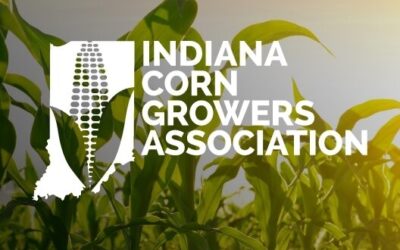House and Senate Ag Committee chairs release long-awaited farm bill priorities
By Blair Shipp, American Soybean Association

Soybean growers are powering through the planting season as ASA and its farmer leaders actively advocate for soy priorities in Washington, D.C., and across soybean-producing states. As spring unfolds, long-awaited news regarding the farm bill is finally emerging from Congress.
Two years after ASA released its farm bill priorities, in May, farm bill highlights were released by both the House and Senate Agriculture Committee chairs.
“It is a welcome development to see progress toward a new and improved farm bill, and we are hopeful that meaningful, bipartisan legislation will be advanced this year,” said ASA president Josh Gackle, soy grower from North Dakota. “Farmers face significant headwinds – including an unfavorable farm income outlook and volatility in access to export markets – and strengthening the farm bill is more important than ever.”
Key ASA priorities under consideration include:
- Improving the Title I farm safety net to be more responsive and predictable, including meaningful adjustments to reference prices and greater access to Agriculture Risk Coverage and Price Loss Coverage through expansion of base acres.
- Expanding trade promotion programs to help grow and diversify agricultural markets through substantial increases for the Market Access Program and the Foreign Market Development program.
- Protecting and enhancing crop insurance to assist with volatile weather and crop loss.
- Maintaining the farmer-financed soybean research and promotion checkoff.
- Building biobased market opportunities to promote soy utilization.
- Investing in research for innovation and competitiveness.
- Providing biofuels opportunities to help the nation become more energy independent.
- Enabling greater access to voluntary conservation programs to meet demand through historic investments.
The Senate proposal is intended to inspire discussion and negotiations, and ASA looks forward to discussing proposals further with committee leadership.
ASA will continue to advocate for farm bill priorities as the process moves forward.
SAF development
The Department of Treasury has extended its acknowledgment of soy as a sustainable aviation fuel (SAF) source, allowing soybean oil-based SAF to qualify for the SAF tax credit (40B).
The development, announced this month, follows initial recognition last December through a Renewable Fuel Standard pathway. The updated guidance also emphasizes the carbon intensity (CI) reduction score for soy, highlighting its role in promoting sustainability within the aviation industry.
Since the Dec. 15 announcement, ASA has actively advocated for a stronger value proposition for soybean oil. The aim was to surpass the $1.25 per gallon credit baseline for SAF achieving a 50 percent greenhouse gas (GHG) reduction, and the new pathway through updated GREET modeling accomplishes this at $1.30 baseline with potential $1.35 with specific ag practices.
While the Treasury’s guidance represents progress for soy, it also presents challenges.
Under the new pathway, soybeans must be cultivated using both no-till and cover cropping practices. While ASA supports climate-smart agriculture, there are concerns that mandating only these practices among various sustainability measures may limit soybean oil’s viability as a SAF feedstock. Moreover, the feasibility of implementing no-till and cover cropping varies across different regions of the soy-growing belt, potentially leading to regional disparities.
ASA calls for a more inclusive approach that considers sustainability practices that would be feasible across all soy-producing states. Soy growers are appreciate, however, of efforts by USDA to enhance CI reduction scores for soybeans.
Looking ahead, the Treasury Department, alongside an ad hoc working group of agencies, will develop the Clean Fuel Production Credit (45Z). This initiative aims to provide additional avenues for soybean growers to support the biofuels industry.
ASA is committed to collaborating with relevant agencies to ensure that the Clean Fuel Production Credit (45Z) incorporates flexible sustainability practices, empowering soybean farmers to effectively contribute to reducing carbon emissions in the transportation sector.
EPA regulations and challenges
In April, the EPA announced updates to its Herbicide Strategy, signaling positive changes in the ongoing dialogue with the agency. While these updates simplify the regulatory landscape for growers, ASA acknowledges that soy’s concerns regarding risk assessment and mitigation have not been fully addressed. ASA continues to advocate for science-based regulations that strike a balance between environmental stewardship and growers’ practical needs.
However, amidst these policy developments, EPA’s proposed interim decision (PID) regarding the registration review of acephate — a commonly used insecticide — stirs concerns within the agricultural community. ASA Director Luke Sayes, representing Louisiana soybean growers, voices apprehensions regarding the potential ban’s implications.
ASA commits to reviewing the PID and collaborating with stakeholders to advocate for continued farmer access to acephate, crucial for managing destructive insect pests.
As ASA navigates these policy landscapes, the organization remains steadfast in its commitment to representing the interests of soybean farmers nationwide, ensuring a resilient and sustainable future for American agriculture.
Posted: May 18, 2024
Category: Indiana Corn and Soybean Post - May 2024, ISA, Membership and Policy, News




